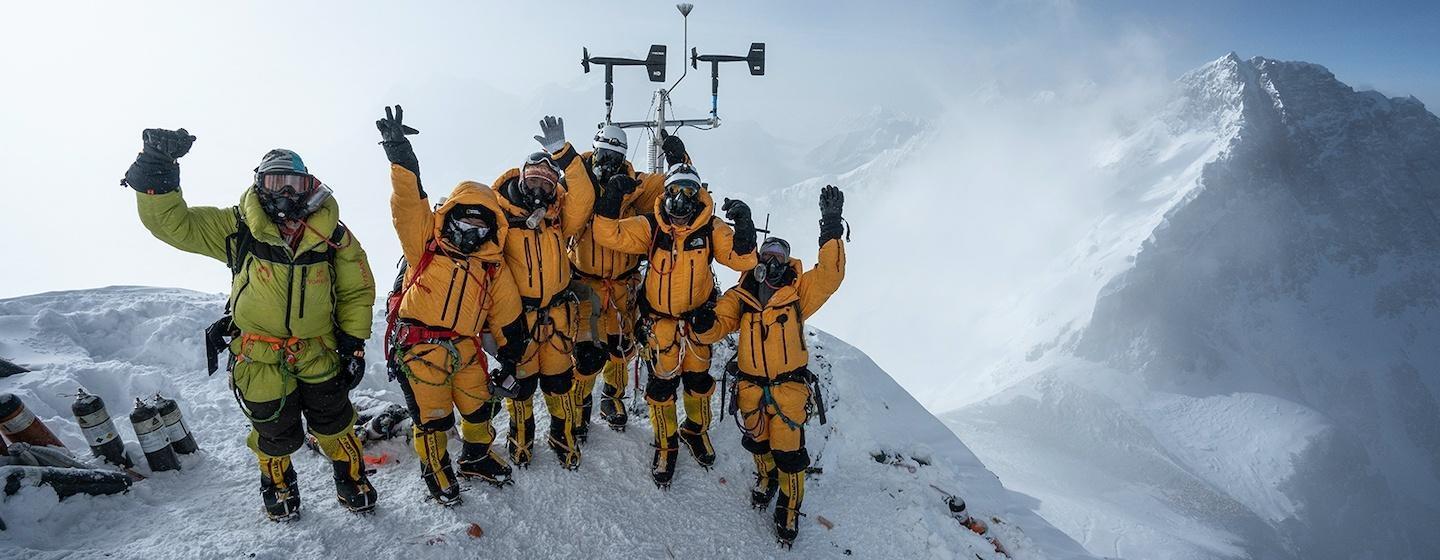Appalachian State Leads Climate Research at the Roof of the World


It’s safe to say that technology has revolutionized weather forecasting.
Satellites, weather balloons, aircraft dropping sounding devices into storms, computers, etc. It allows to understand and predict the weather with greater accuracy.
It also allows us to check the current conditions on, say, Mount Everest.
Sunny, -21F, with a 4mph wind.
Yep, there’s a weather station on the world’s highest mountain: Mount Everest. Elevation 29,032 feet. (actually, it’s not right at the top. The station is at 27,657 feet).
It’s run by researchers at Appalachian State University.
Dr. Baker Perry and Dr. Anton Seimon, both professors in Appalachian State’s Department of Geography and Planning, were both part of the 2019 National Geographic and Rolex Perpetual Planet Everest Expedition team that installed a network of weather stations on the mountain.
The meteorological station has been recognized by the Guinness Book of World Records as the highest altitude weather station.
“Mount Everest may be one of the sunniest places in the world,” said Perry. “That’s because at such a high elevation, there is very little scattering of sunlight. But we need to understand the implications of that because it helps us to improve our models of glacier extent and water availability across the region.”
Mountain glacier systems are decreasing in volume worldwide because of climate change, but very little is known about those systems in elevations above 16,000 feet.
“The data from the highest weather stations indicates rapidly emerging impacts from the mass loss of Mount Everest’s highest glacier,” said Perry.
The weather data from the stations include real-time wind, temperature and precipitation measures. The station is also important because it reaches into the Sub-tropical Jet Stream, a band of powerful winds that circle the globe at high altitudes and are notoriously difficult to track.
There are two other additional benefits. The real-time data is improving climber safety on the main routes to the top of the mountain.
Perry is also using the data from the top-of-the-world station in his classroom, especially where is relates to climate science and climate change.
“Students with direct experience analyzing this type of data are in high demand in the workplace, especially with government agencies and private sector companies who need to project the future of climate chance,” added Perry.
“Through this work with the National Geographic Society, we’ve established a model for other international expeditions, working with long-term research collaborations and nonacademic partners,” said Dr. Christine Hendren, Director of App State’s Research Institute for Environment, Energy and Economics. “This will help us to support other research opportunities.”
Perry and his team are working closely with Sherpa climbers-skilled mountaineers who live in the Himalayas- to maintain the Mount Everest weather station.
The project has raised App State’s profile in the climate science field.
“There’s something about Mount Everest,” said Perry. “It’s the highest point in the world and it captivates people’s attention. It’s also providing some fascinating science.”
By the way, whenever you are reading this, just ask Google. It's pretty cool.